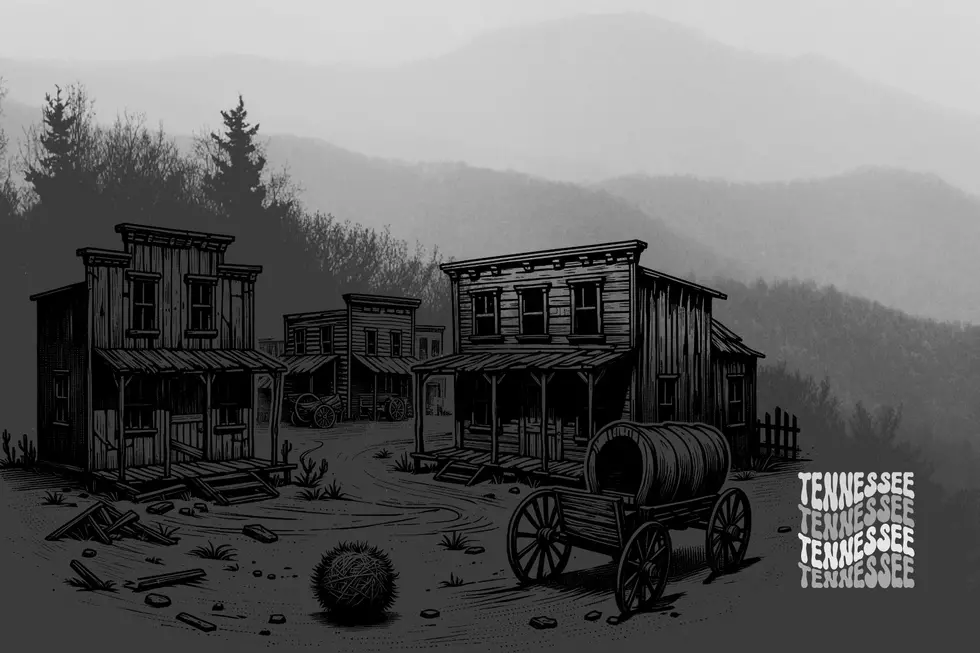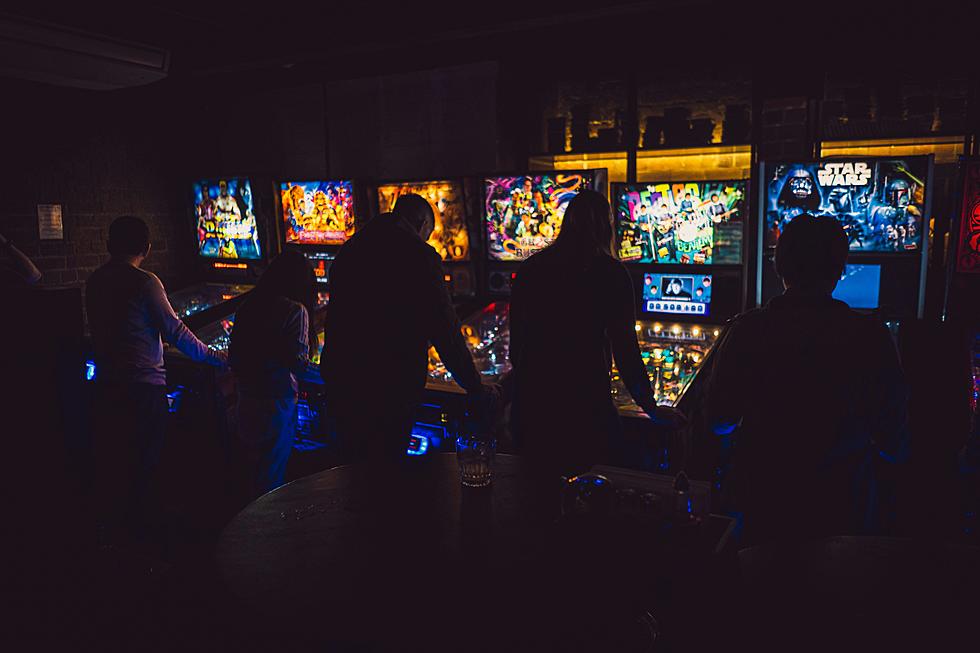![Gatlinburg, Tennessee Hotel Evicts Guests for Trying to Pet Bears [IMAGES, VIDEOS]](http://townsquare.media/site/76/files/2022/08/attachment-Untitled-design58.jpg?w=980&q=75)
Gatlinburg, Tennessee Hotel Evicts Guests for Trying to Pet Bears [IMAGES, VIDEOS]
If you go to Gatlinburg, you can usually count on seeing AT LEAST two things--pancake restaurants and bears. (Well, MAYBE bears; I've been multiple times and haven't seen one.)
BEARS ARE GATLINBURG SCENERY
But it's been a while since I've been, and it seems that bears have grown more and more comfortable among the tourists and passersby.
What always strikes me as odd about this is that visitors DO look forward to seeing bears. But would you seriously want one sidling up to you on the street while your shopping for souvenirs? I wouldn't either. And what if you had an encounter HERE?
WHY DO PEOPLE WANT TO INTERACT WITH A BEAR?
While I didn't see too many people make a break for it in order to get away from the bear--that's probably not smart, anyway--I also didn't see anybody walk up to it and pretend it was their pet cat Fluffy, either.
But that doesn't mean it HASN'T happened. I mean, weren't we recently seeing almost DAILY reports of tourists getting way too close to buffalo out west only to pay the expected price?
I'm not going near a buffalo any more than I'm going near a bear. And no, I wouldn't avoid petting a bear for fear it might get me kicked out of my hotel; I'd just do it because it's the SMART thing to do. And I may never have written a bigger understatement.
THERE ARE CONSEQUENCES FOR TRYING TO PET A BEAR
You see, the Quality Inn Creekside Hotel in Gatlinburg has very recently dealt with a guest who actually stuck her hand out and NEAR the mouth of a black bear.
Raise your hand if you EVER thought you'd need to tell someone not to pet a bear.
Did you notice that the owner has had to kick out guests--PLURAL--for getting too close to bears? He's trying to find the woman in that image so he can do the same to her.
The U.S. National Park Service has extensively addressed the issue of human/bear contact, and the agency's FIRST rule of thumb is, once again, a raging understatement...AVOID CONTACT.
WHAT YOU SHOULD DO IF YOU ENCOUNTER A BEAR
But if you and Yogi lock eyes, these are the recommendations from the USNPS:
- Identify yourself by talking calmly so the bear knows you are a human and not a prey animal. Remain still; stand your ground but slowly wave your arms. Help the bear recognize you as a human. It may come closer or stand on its hind legs to get a better look or smell. A standing bear is usually curious, not threatening.
- Stay calm and remember that most bears do not want to attack you; they usually just want to be left alone. Bears may bluff their way out of an encounter by charging and then turning away at the last second. Bears may also react defensively by woofing, yawning, salivating, growling, snapping their jaws, and laying their ears back. Continue to talk to the bear in low tones; this will help you stay calmer, and it won't be threatening to the bear. A scream or sudden movement may trigger an attack. Never imitate bear sounds or make a high-pitched squeal.
- Pick up small children immediately. Do not make any loud noises or screams—the bear may think it’s the sound of a prey animal. Slowly wave your arms above your head and tell the bear to back off. Do NOT run or make any sudden movements. Do not make any loud noises or screams—the bear may think it’s the sound of a prey animal.
- Hike and travel in groups. Groups of people are usually noisier and smellier than a single person. Therefore, bears often become aware of groups of people at greater distances, and because of their cumulative size, groups are also intimidating to bears.
- Make yourselves look as large as possible (for example, move to higher ground).
- Do NOT allow the bear access to your food. Getting your food will only encourage the bear and make the problem worse for others.
- Do NOT drop your pack as it can provide protection for your back and prevent a bear from accessing your food.
- If the bear is stationary, move away slowly and sideways; this allows you to keep an eye on the bear and avoid tripping. Moving sideways is also non-threatening to bears.
- Do NOT run, but if the bear follows, stop and hold your ground. Bears can run as fast as a racehorse both uphill and down. Like dogs, they will chase fleeing animals.
- Do NOT climb a tree. Both grizzlies and black bears can climb trees.
- Leave the area or take a detour. If this is impossible, wait until the bear moves away. Always leave the bear an escape route.
- Be especially cautious if you see a female with cubs; never place yourself between a mother and her cub, and never attempt to approach them. The chances of an attack escalate greatly if she perceives you as a danger to her cubs.
And one more thing...if you're in Gatlinburg, there really IS plenty to do. Visit the aquarium; go to Ripley's; take in Clingman's Dome; eat some PANCAKES, for crying out loud.
Just stay the H-E-Double-Hockey-Sticks away from bears.
[SOURCE: WSMV-Nashville]
Forget a Cabin, You Can Stay in a Smoky Mountain Castle Near Gatlinburg
SEE: Have You Ever Heard of the Abandoned Amusement Park in Downtown Gatlinburg?
New Skylift Attraction w/Horseback Riding & Cottages in the Smoky Mountains
More From WBKR-FM









